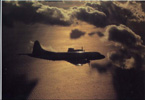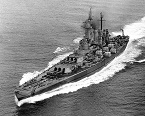FatR
Posts: 2522
Joined: 10/23/2009
From: St.Petersburg, Russia
Status: offline

|
quote:
ORIGINAL: Commander Stormwolf
Greetings,
it is wondered if perhaps the IJN's reports from liason officers observing the battle of britain
were counter-productive.
The main suggestions: increase the range of the fighters, increase the maneuverability
The result: the Zero fighter
Technical requirements for Zero were formulated far earlier and at the time of BoB they already were testing prototypes.
quote:
ORIGINAL: Commander Stormwolf
The question is: why does every other fighter in the world carry less fuel than the zero?
Why is every other fighter faster than the zero?
Because they aren't? In particular, every carrier fighter in production until Hellcat and Seafire was considerably slower than Zero. Looking at land Allied fighters, Warhawks and Aerocobras demonstrated approximately equal speed in real combat, Hurricanes were much slower. The main vice of Zeros was an engine which reserves of improvement ran out in 1942 (later modifications of Sakae had better high-altitude performance, but no more power). There was no "faulty Japanese approach to air combat", just the design dead-end. Of course, Zero had an expiration date anyway, like its Allied contemporaries, but development of its successor was slowed down by various factors, and even had it been free of troubles, A7M almost certainly woudn't have been available in numbers for crucial battles of late-1943 and 1944 anyway (Ki-84 really appeared in large numbers only in autumn of 1944, production of N1K-J, adopted even earlier, was very slow).
quote:
ORIGINAL: Commander Stormwolf
It appears that larger fuel tanks with more fuel inside weight more..
Even soviet fighters made of laminated wood with large radials (LAG-5) fly more than 400mph,
No version of La-5 achieved or exceeded 400. That only became reality on La-7
quote:
ORIGINAL: Commander Stormwolf
yet all IJN fighters struggle to achieve such a basic speed.
Late-war versions of N1K2-J achieved it. See:
http://www.j-aircraft.org/smf/index.php?topic=11204.0
quote:
ORIGINAL: Commander Stormwolf
Out of concern of operational losses, severe compromises were made to the aircraft's tactical capabilities
(speed, survivability, and firepower)
Considering that Zero was one of the perhaps top three most heavily armed singe-engined fighters in existence at the time of its adoption, I wonder how a non-compromised firepower should look like.
quote:
ORIGINAL: Commander Stormwolf
Even late war fighters such as the N1K George are encumbered with massive fuel loads 2 or 3 times larger
than european counterparts such as the FW190, Lag, or Typhoon (the entire fuselage is an integral fuel tank)
That's because Western Europe is small compared to the Pacific. By late war Japanese actually had to struggle with lack of range on some of their newer planes.
quote:
ORIGINAL: Commander Stormwolf
This commander's suggestion to the Koku Hombu: build the Ki-44 with a Kasei-21 radial (1850hp vs 1530)
This is a good proposition, but twisting manufasturer's arms in such a way requires signigicant hindsight, and that's why it wasn't done. Besides, Kasei did not achieve 1850 hps until late 1943.
quote:
ORIGINAL: Commander Stormwolf
half the internal fuel,
Ki-44's range was already insufficient.
quote:
ORIGINAL: Commander Stormwolf
2x 20mm on the cowling just like the Lagg-5, build it of good aluminum instead of wood
and you have the highest power-to weight ratio of any fighter in the world.
No, after enlarging the entire plane to accomodade Kasei, with its bigger radius (never mind cowling guns), you probably won't. Well, the result probably will be still better than historical Ki-44, but see above.
quote:
ORIGINAL: Commander Stormwolf
A speed of 425mph in 1943 would be competitive with FW190 / F4U type planes.
Corsairs achieved 425 in second half of 1944, for the record.
quote:
ORIGINAL: Commander Stormwolf
Either this, or just copy the 3 Heinkell-100s you imported from germany instead of letting pride blind your judgement 
He-100 is a failed fighter that got good PR post-war by basically comparing its factory test performance (if not exaggerating it) with actual field performance of RL alternatives.
< Message edited by FatR -- 9/18/2011 10:35:18 AM >
|
 Printable Version
Printable Version

















 New Messages
New Messages No New Messages
No New Messages Hot Topic w/ New Messages
Hot Topic w/ New Messages Hot Topic w/o New Messages
Hot Topic w/o New Messages Locked w/ New Messages
Locked w/ New Messages Locked w/o New Messages
Locked w/o New Messages Post New Thread
Post New Thread